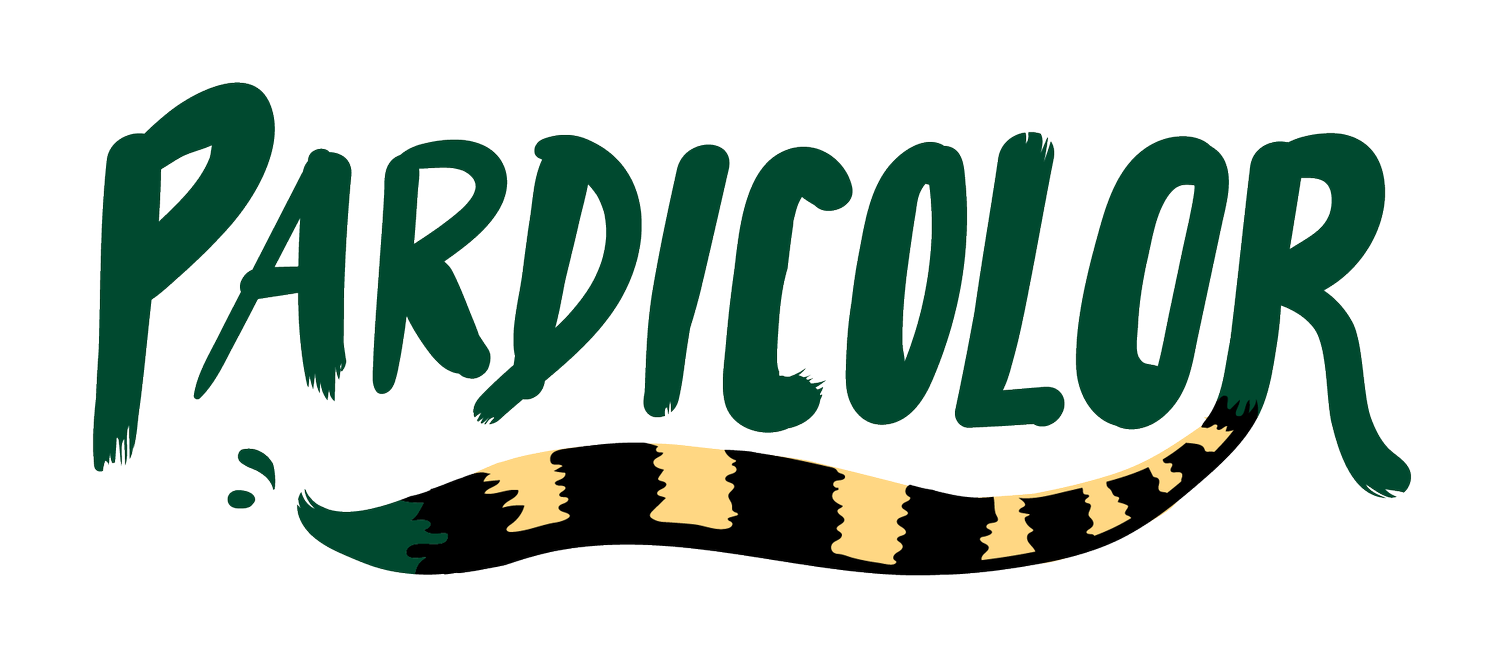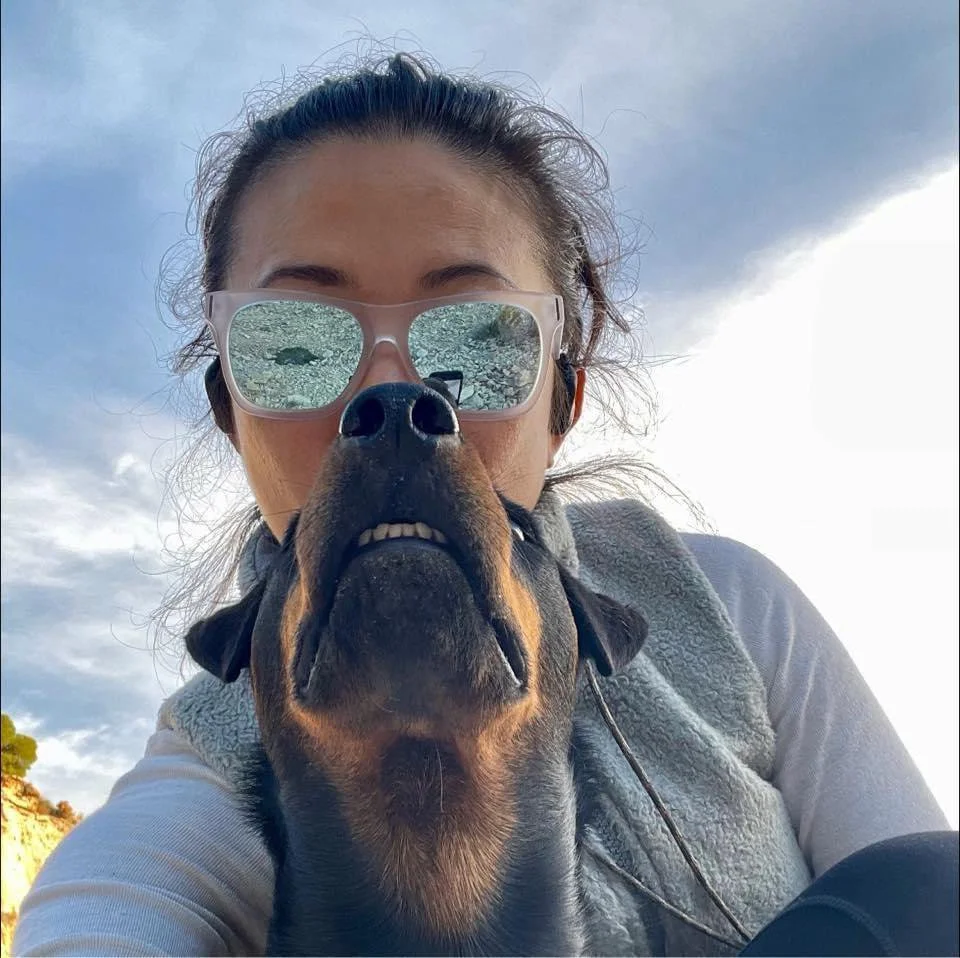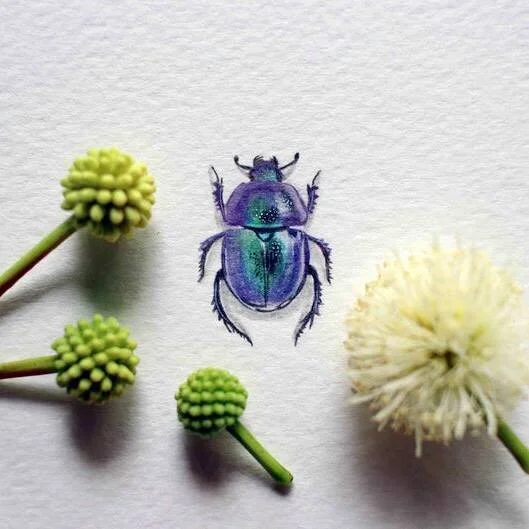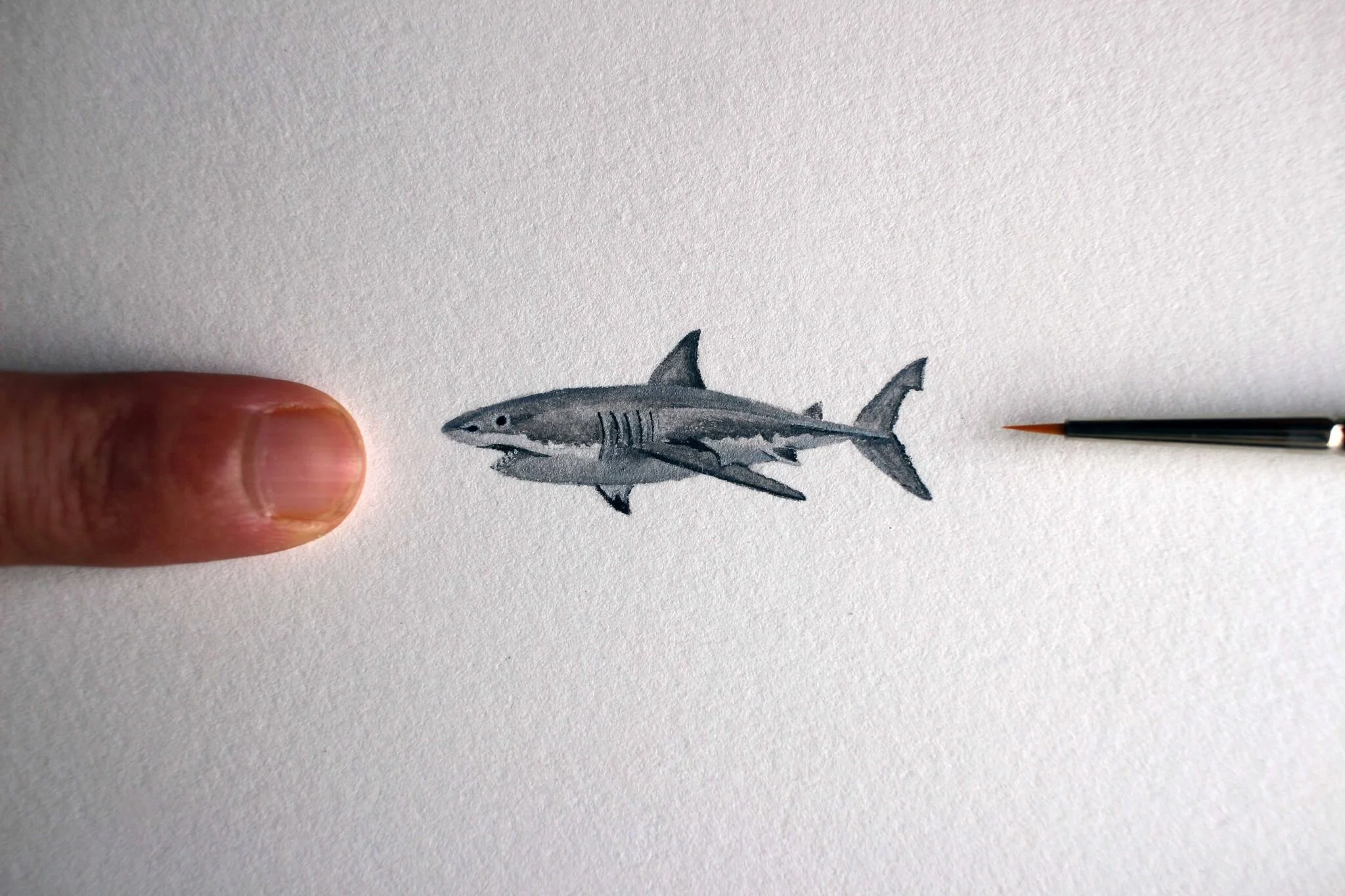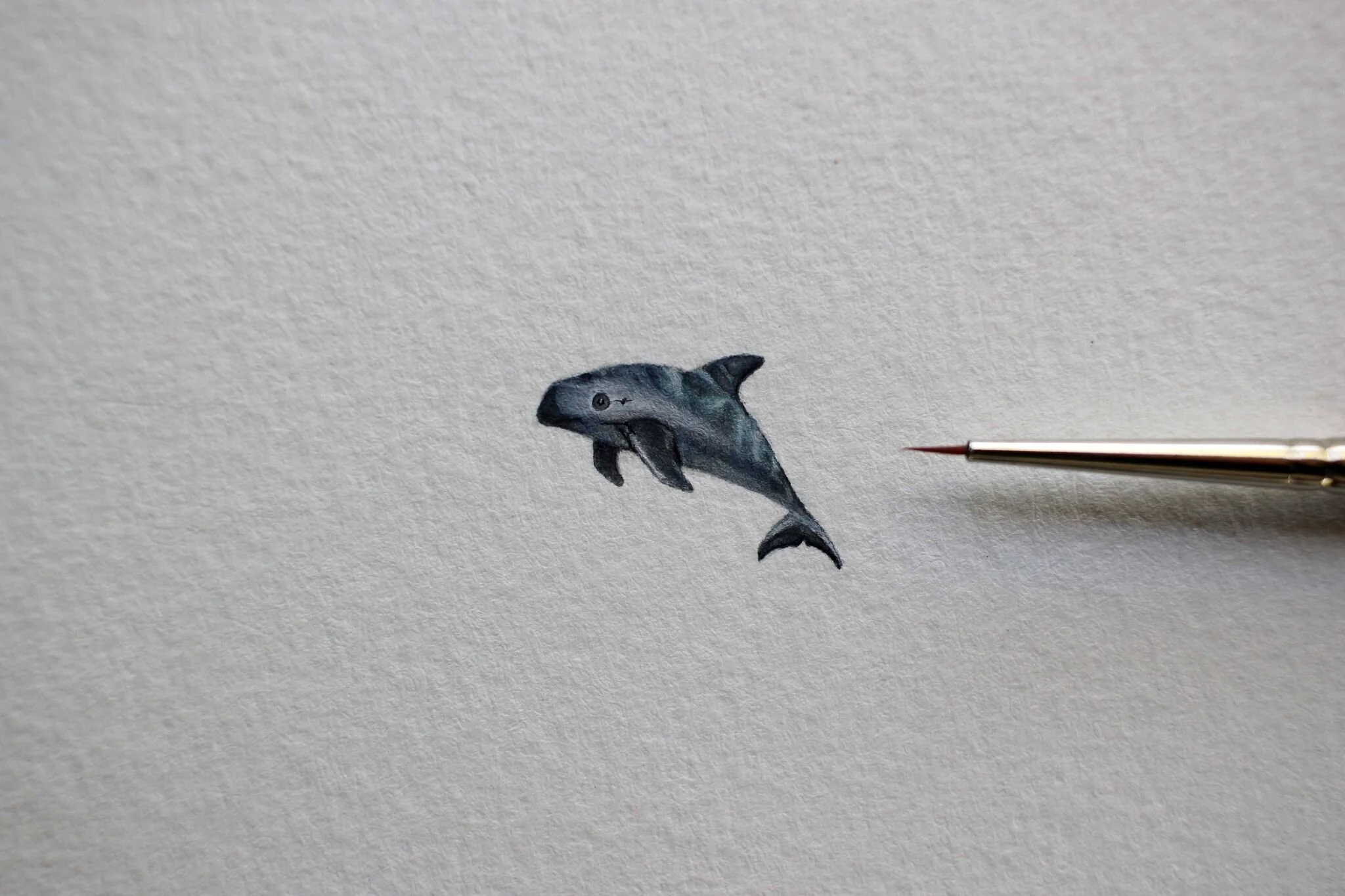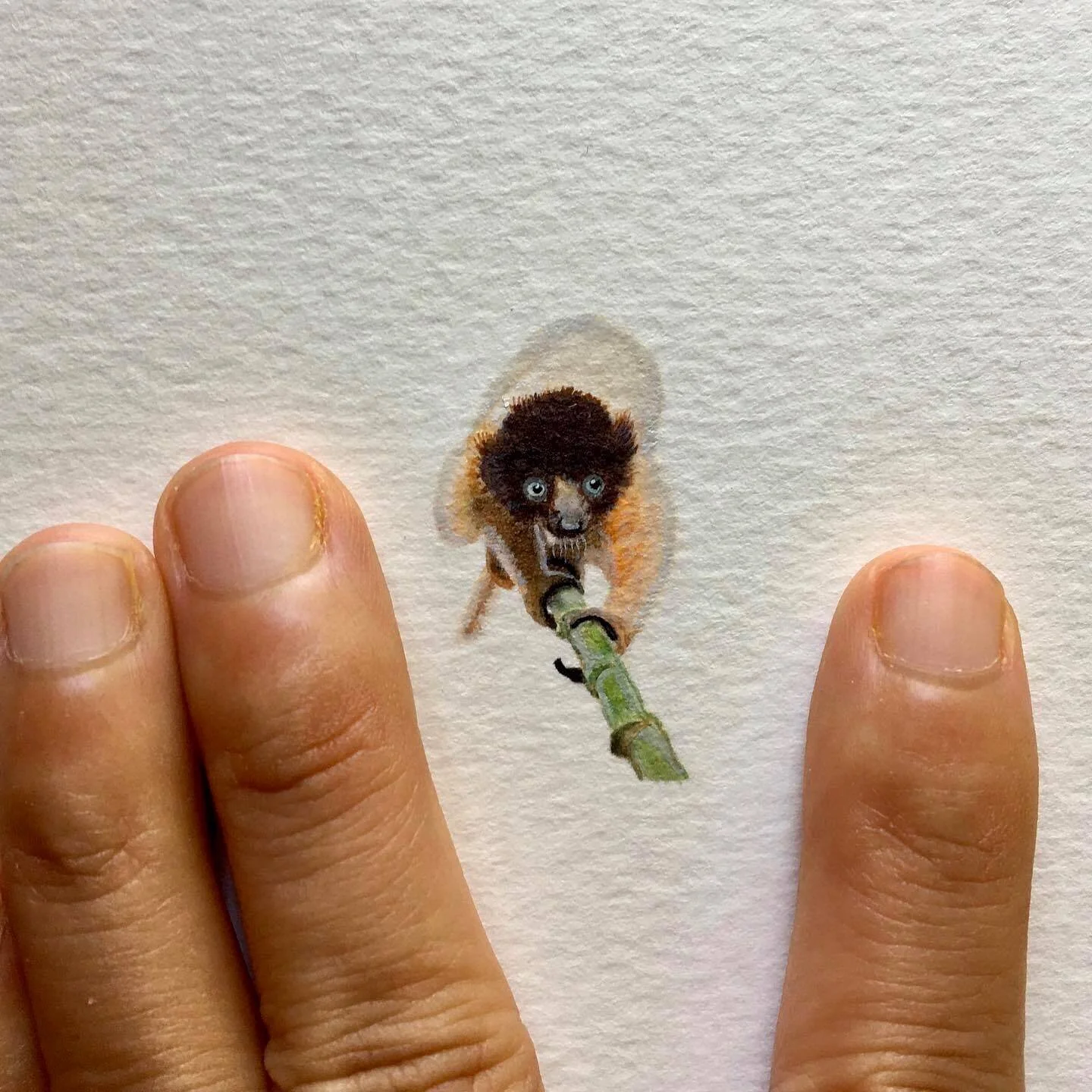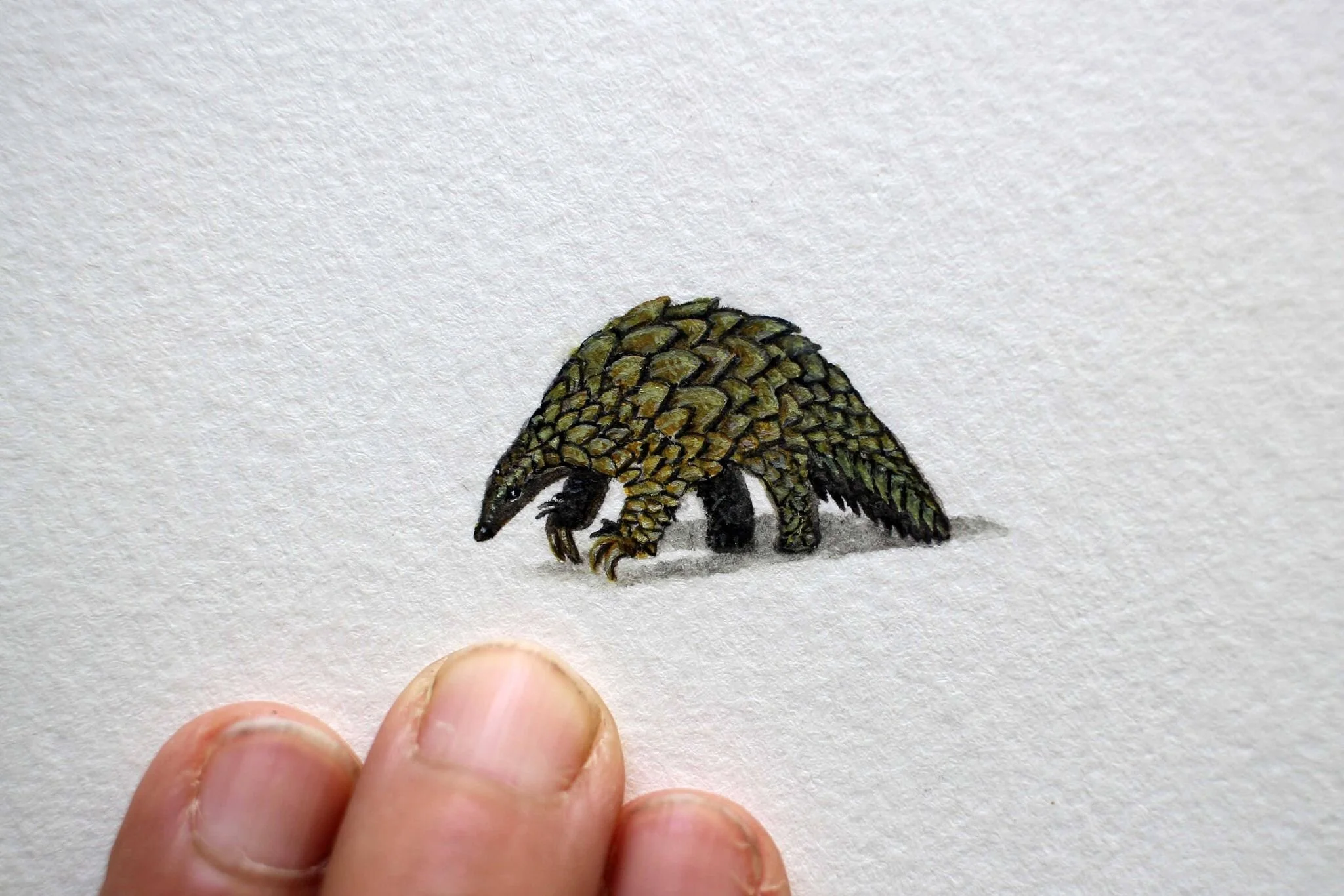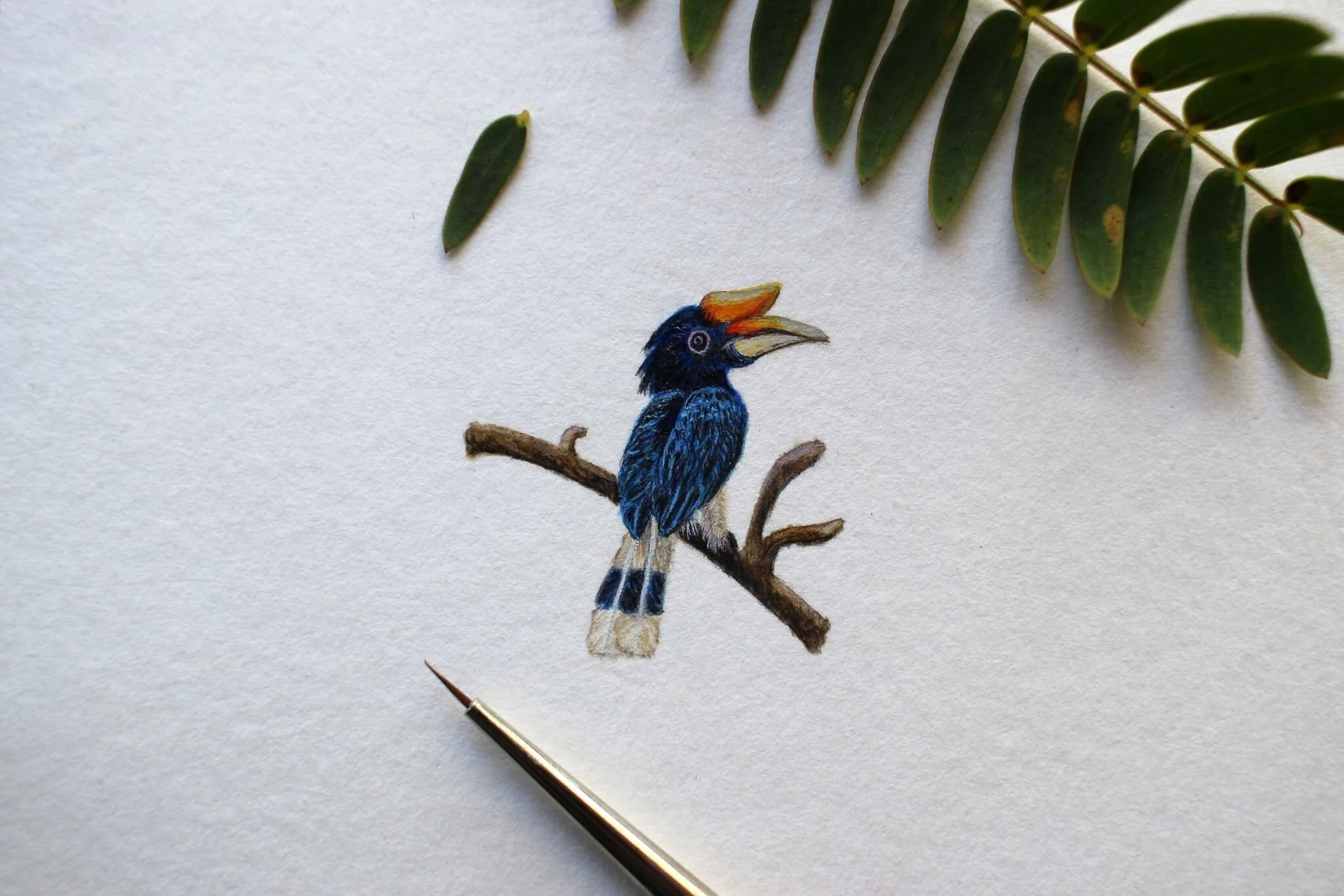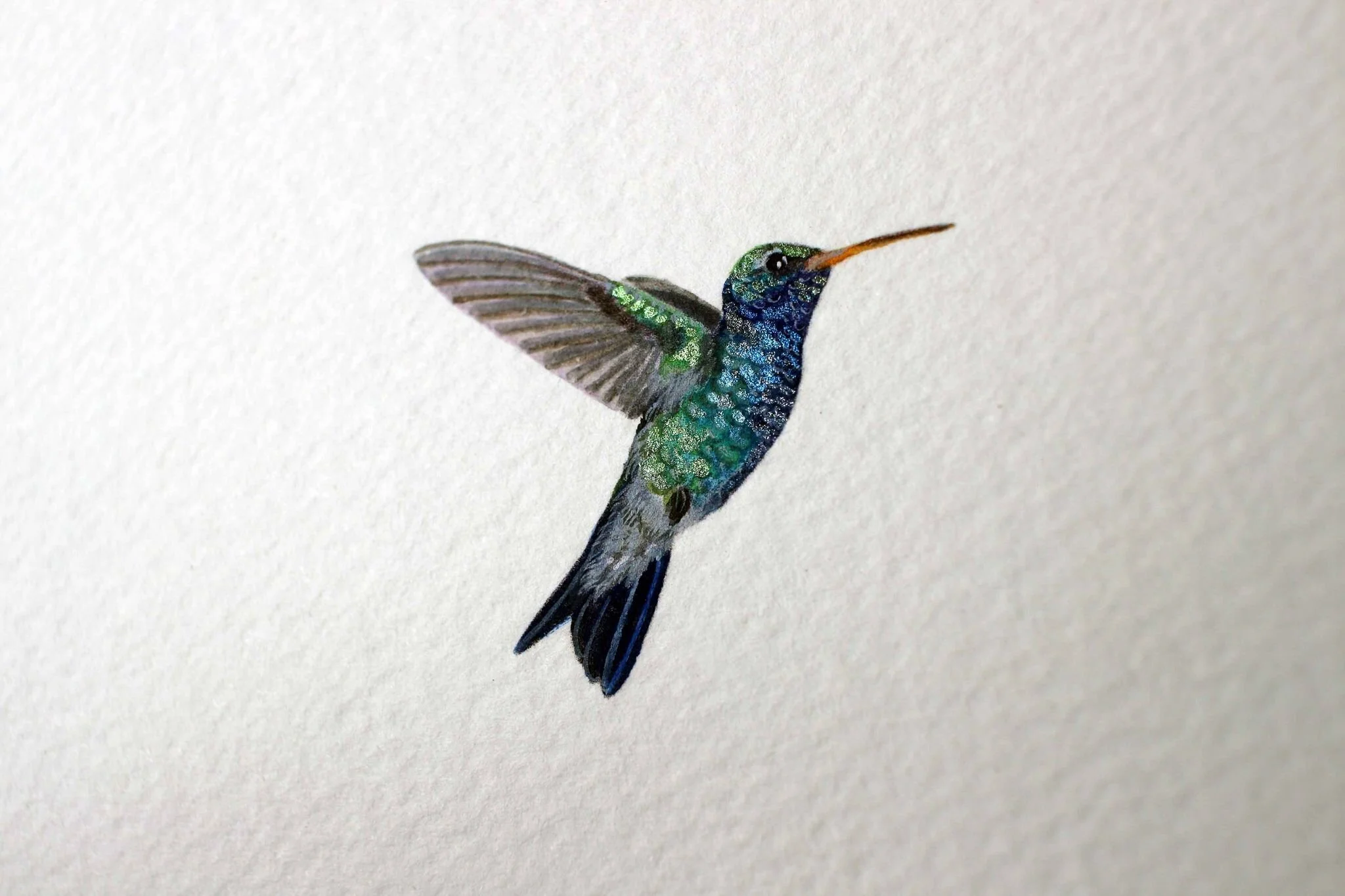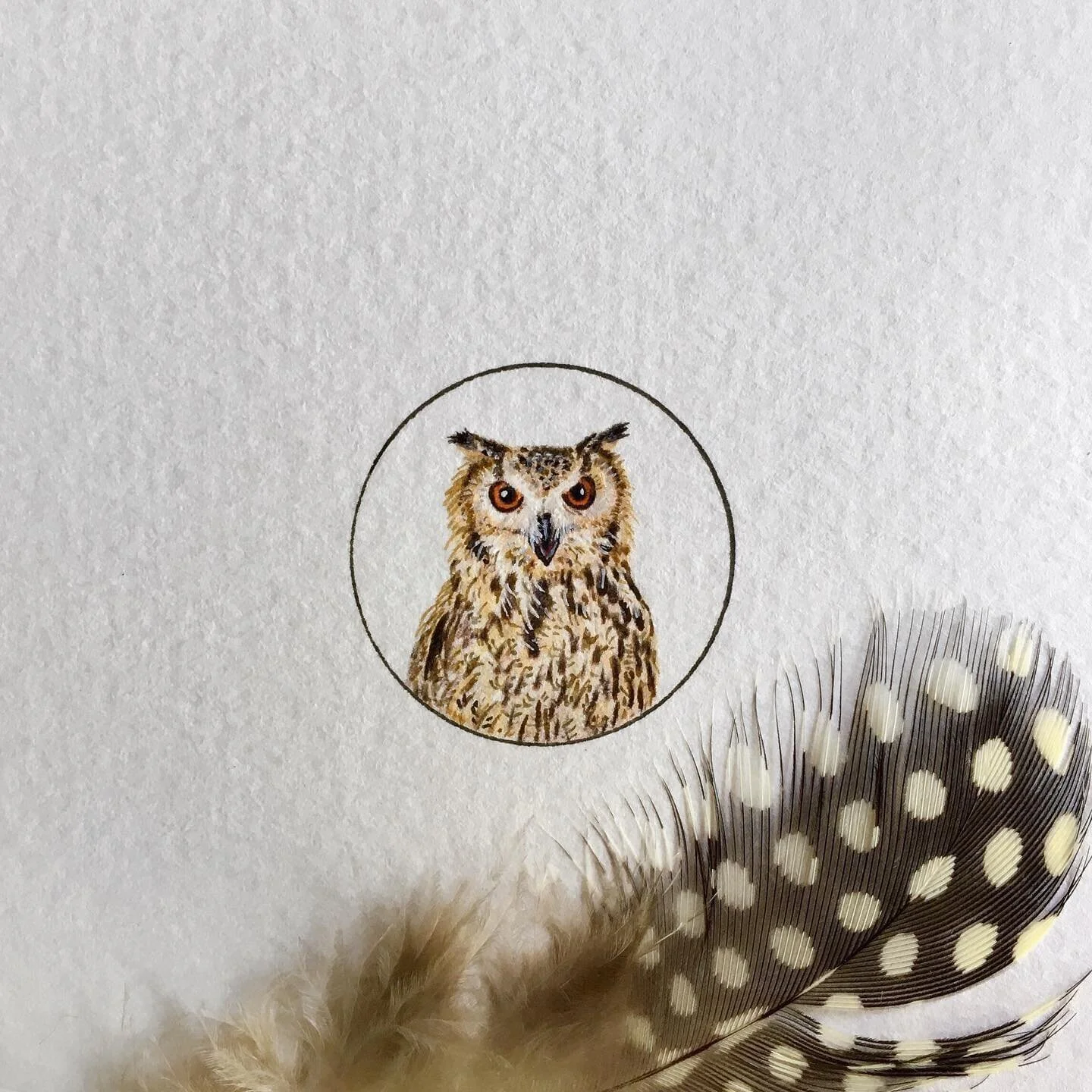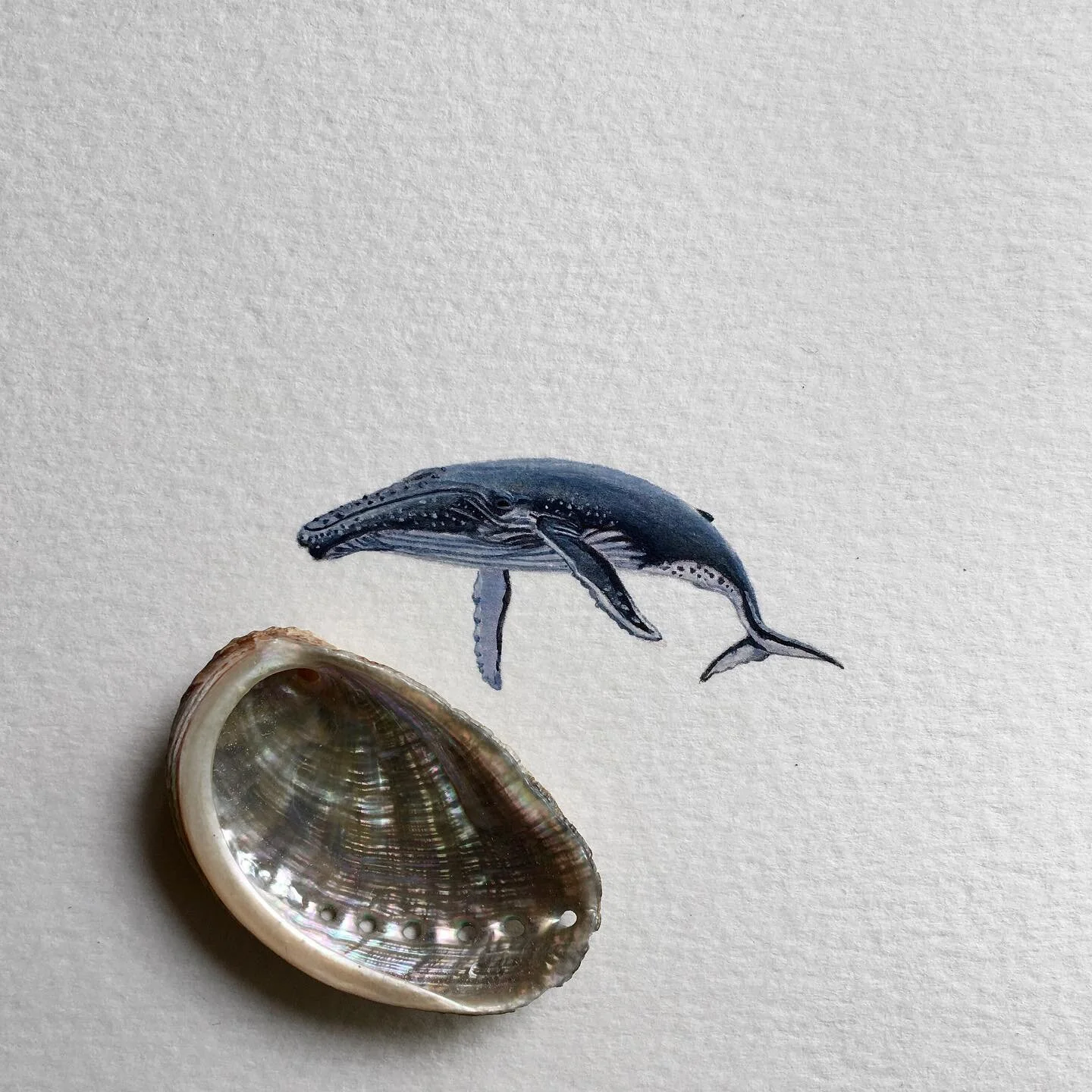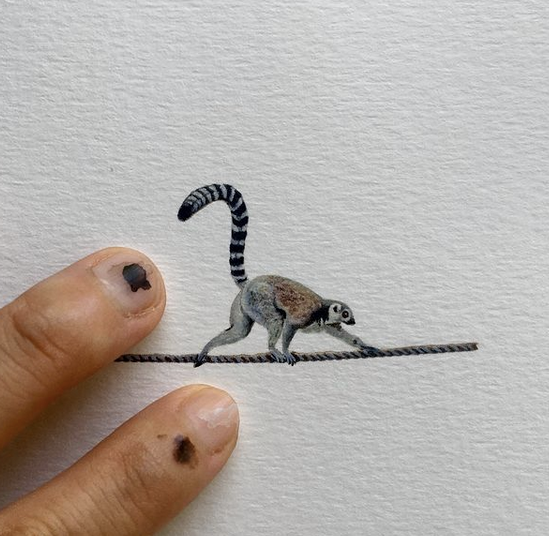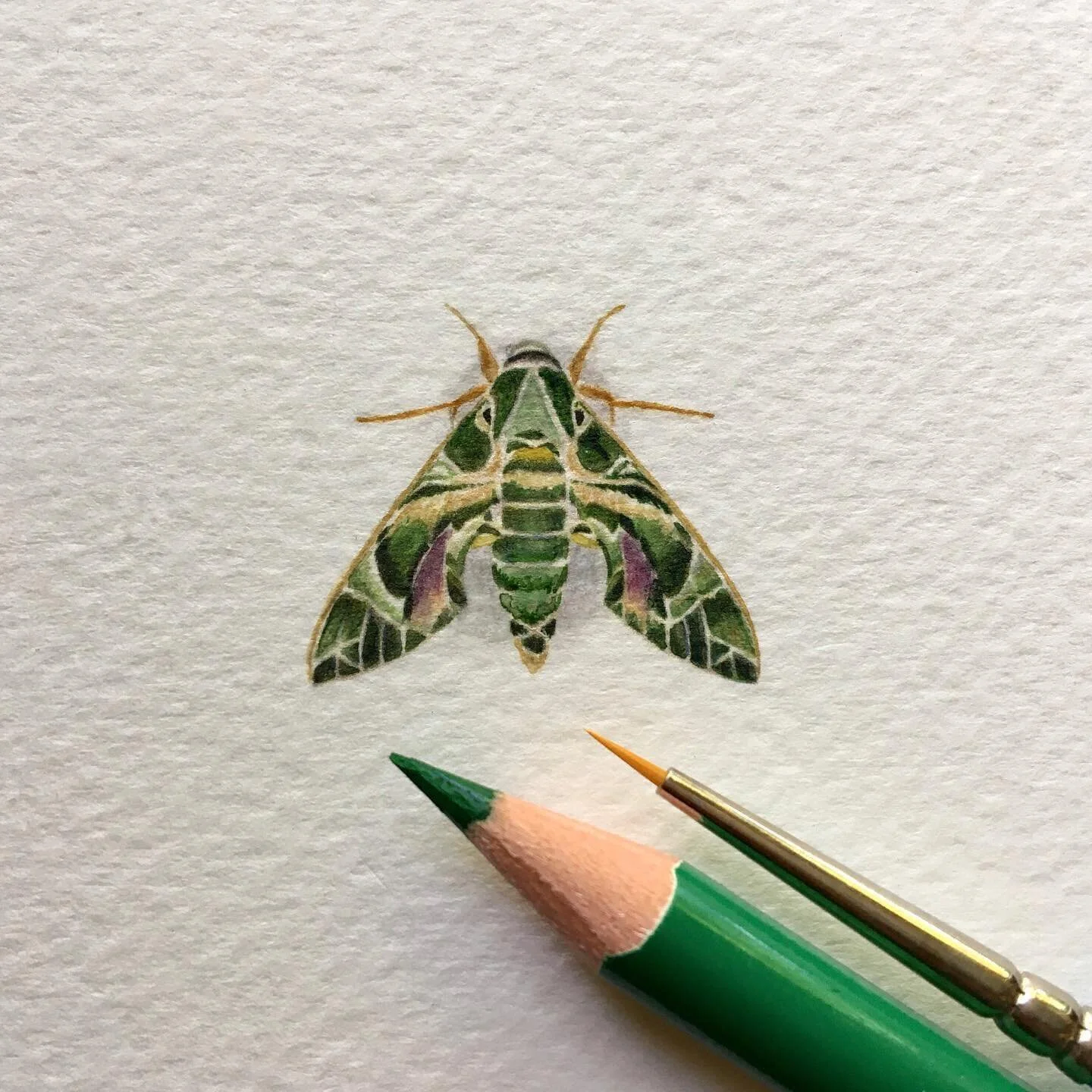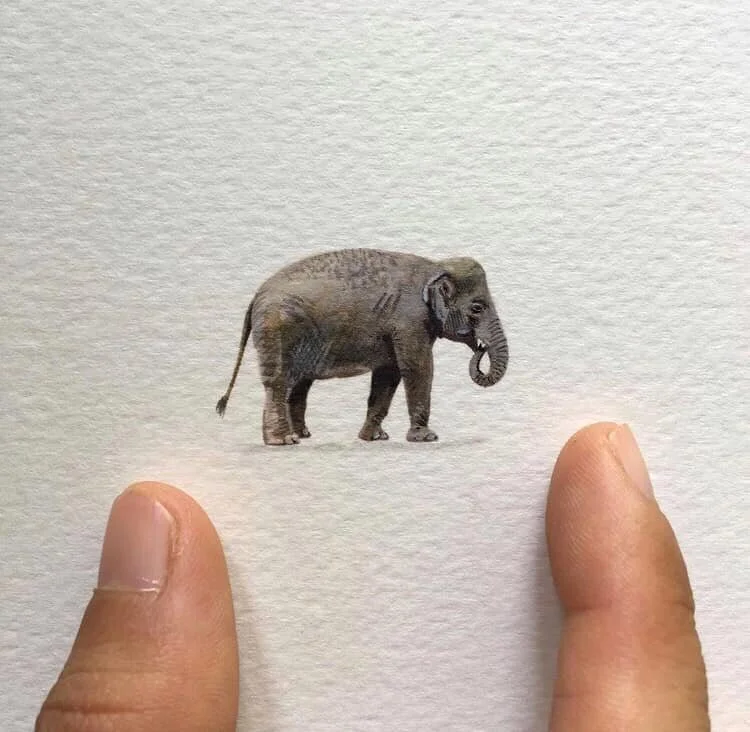
Wildlife Miniatures
Sunsetta Art
MALAYSIA/SPAIN
Scarab beetle.
The scarab beetle was one of the most popular amulets in ancient Egypt because it was a symbol of the sun god Ra. Along with embodying the concept of existence, development, and growth, the scarab was revered for representing the cycle of life and death, and also perceived as a form of protection.
Self-taught from a self-sustainable cabin in the south of Spain, Jenn Sunsetta, originally from Malaysia and working under the name Sunsetta Art, has created a menagerie of wildlife miniatures. The result of less than a year’s immersion Jenn’s water colours are miraculous and captivating in the accuracy of their minute detail and perfectly mirror the artists’s minimalist lifestyle. To see more of Sunsetta Art’s miniatures you can visit her Instagram and Facebook pages.
“I bought myself a small set of beginner's watercolour, watched tutorials on Youtube and started practicing every day… My focus is wildlife as I care for its conservation and I feel that art can draw people into the depths of an issue. Also, I enjoy the challenge of achieving realism of the animals. ”
Sunsetta Art answered questions from PARDICOLOR founder Demelza Stokes via email in July 2021.
Whale shark.
The whale shark is the biggest fish in the world. It's thought that less than 10% of whale sharks born survive to adulthood, but those that do may live to 150. Despite their size, whale sharks are often referred to as "gentle giants". They have no teeth and are very slow swimmers.
Clownfish.
White shark.
Vaquita.
Sifaka lemur.
Sunda pangolin.
Strawberry poison-dart frog.
Could you tell us a bit about your background and how you got into doing your wonderful miniature wildlife watercolours?
I am from Malaysia. I used to work in advertising and never had time for anything. About 8 years ago, I left the corporate life for longterm travel. Along the way I met my husband, who is from northern Europe. We are based in the south of Spain. I have never took to art seriously because I never tried. So last October, I bought myself a small set of beginner's watercolour, watched tutorials on Youtube and started practicing every day. There were many failures but some of the better ones I sold to invest in better quality tools. I make small paintings because it makes me less edgy and fit my minimalist lifestyle. My focus is wildlife as I care for its conservation and I feel that art can draw people into the depths of an issue. Also, I enjoy the challenge of realism of the animals.
Rhinoceros Hornbill.
Rhinoceros Hornbill, the national bird of Malaysia. Native to Borneo, Sumatra, Java, the Malay Peninsula, Singapore, and southern Thailand. Deforestation for palm oil is resulting in a loss of habitat.
Broad-billed hummingbird
Eurasian eagle owl.
Humpback whale.
Ring-tailed lemur.
How do you choose the species and what do you hope people feel when they see your work?
I just paint what I fancy, usually all my favourite animals. Some are commissioned work - other people's favourite animals. Every time I post a painting of an animal, I include a trivia about it. A little fun fact. So I hope it would bring awareness and that through my humble art, the plight of the voiceless can be heard.
We all have a passion for Mother Nature and I'd like to share with you my favourite poem by Lord Byron:
"There is pleasure in the pathless woods, there is rapture in the lonely shore, there is society where none intrudes, by the deep sea, and music in its roar; I love not Man the less, but Nature more."
Oleander hawk-moth.
Oleander hawk-moth (Daphnis nerii). The caterpillars feed mainly on oleander (Nerium oleander) leaves, a highly toxic plant, to which they are immune.
Asian Elephant.
Elephants used to roam over most of Asia, but are now found in only 15% of their former range. Exponential growth of the human population in the region and resulting habitat loss for elephants has drastically shrunken their room to roam, resulting in small isolated populations in fragmented landscapes.
